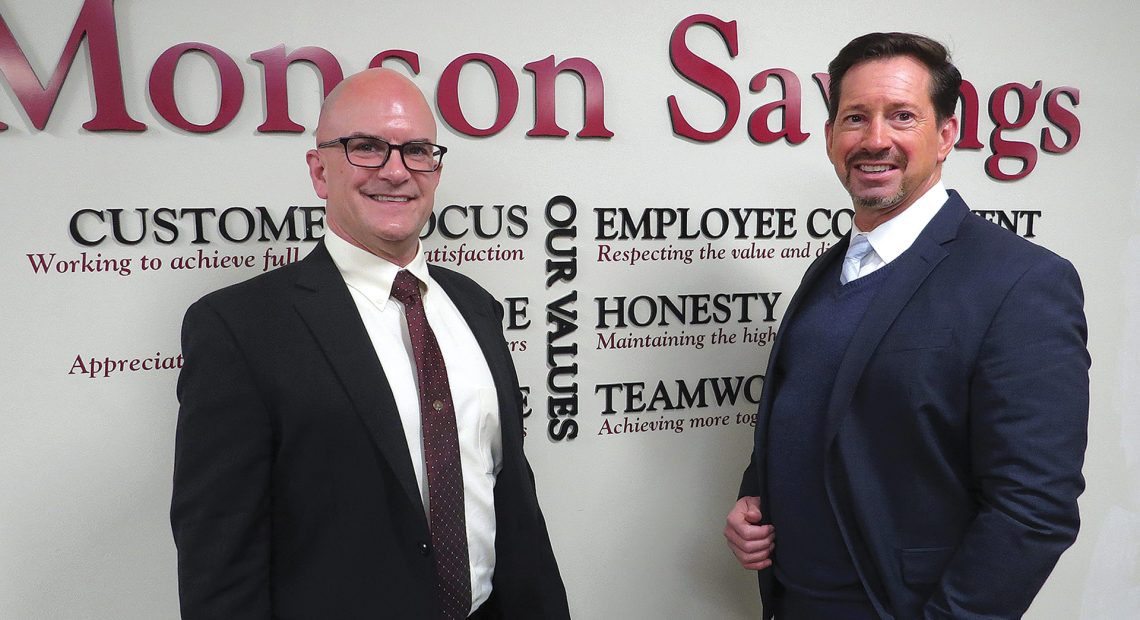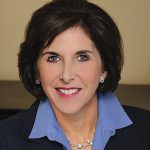There Are Few Changes, but Some Could Impact Your Return
By Dan Eger and Shannon Shainwald
It’s that time again already: time to file your taxes and close out 2021.
Over the past two years, we have all witnessed rapid changes to how we do business and live our lives. Tax season has been no different and has seen many changes to tax law and deadlines. Unlike the past two years, the 2022 tax season is currently set to complete with the normal deadlines, so be sure to get your taxes in order before the filing deadlines: April 18 for federal returns and April 19 for Massachusetts returns.
What’s New on Your 2021 Tax Return?
New changes to tax law for 2021 individual filing are not as hefty as in prior years, but there are still some changes that may make a difference on your return.

Dan Eger

Shannon Shainwald
Watch out for letters from the IRS. Letter 6419 will reflect the child tax credit advance payments if you receive any in 2021. The child tax credit is also higher and includes 17-year-old children in 2021, so be sure you know which of your dependents qualify and for how much. Letter 6475 will reflect the third stimulus payment if you qualified to receive one. Letter 4869C will share your identity-protection PIN for your 2021 return if you have opted into the program or have dealt with fraudulent returns in the past.
The charitable deduction is once again available for up to $300 to those taking the standard deduction and was expanded to allow up to $600 for those who are married filing jointly in 2021.
For itemized returns, the annual charitable deduction limit for monetary donations is equal to 100% of your adjusted gross income for 2021, which means you can remove all taxable income with your donations.
Cryptocurrency has risen in popularity over the past year. Be aware of the tax implications on your cryptocurrency investments. Speak with a trusted tax preparer to make sure your investments are accounted for properly on your return.
Preparing Your Return
Will you be preparing your return yourself, or will you hire someone to file on your behalf? Have a plan in place now, so you know what required information you need to have at hand and what you expect to pay for completion of all needed forms. If you will be using a new tax preparer for 2021, they will ask for a copy of your prior-year return in addition to all relevant documents for your 2021 tax filing.
The IRS also offers a Free File program if your income is below $72,000. Go to irs.gov or see the IRS2Go app to see your options. You may also qualify for local tax assistance through programs like Volunteer Income Tax Assistance (VITA) and Tax Counseling for the Elderly (TCE).
Use Your Resources
The Interactive Tax Assistant (ITA) is an IRS online tool (irs.gov) to help you get answers to several tax-law items. ITA can help you determine what income is taxable, which deductions are allowed, filing status, who can be claimed as a dependent, and available tax credits. You can also visit www.mbkcpa.com/2021-tax-filing to find more resources for assistance with your 2021 tax filing, including blogs on the latest changes and links to useful IRS and state resources.
Be Vigilant
Be especially careful during this time of year to protect yourself against those trying to defraud or scam you. The IRS will never call you directly unless you are already in litigation with them. They will not initiate contact by e-mail, text, or social media. The IRS will contact you by U.S. mail. However, you still need to be wary of items received by mail. Anything requesting your Social Security number or any credit-card information is a dead giveaway for scam identification. Watch out for websites and social-media attempts that request money or personal information. You can check the irs.gov website to research any notice you receive or any concerns you may have. You can also contact your tax practitioner for assistance.
What If You Have Been Compromised?
How do you know if someone has filed a return with your information? The most common way is your tax return will get rejected for e-file. These scammers file early. You may also get a letter from the IRS requesting you verify certain information. If this does happen, there are steps to take to get this rectified.
First, contact the IRS Identity Protection Specialized Unit at (800) 908-4490. Then, file Form 14039 Identity Theft Affidavit, and paper file your return.
In addition, we recommend you take further steps with agencies outside the IRS:
• Report incidents of identity theft to the Federal Trade Commission at www.consumer.ftc.gov or the FTC Identity Theft hotline at (877) 438-4338 or TTY (866) 653-4261.
• File a report with the local police.
• Contact the fraud departments of the three major credit bureaus: Equifax: www.equifax.com, (800) 525-6285; Experian: www.experian.com, (888) 397-3742; or TransUnion: www.transunion.com, (800) 680-7289.
• Close any accounts that have been tampered with or opened fraudulently.
Identity Protection PIN (IP PIN)
If you are a confirmed identity-theft victim, the IRS will mail you a notice with your IP PIN each year. You need this number to electronically file your tax return.
You may also opt into the IP PIN program. Visit www.irs.gov/identity-theft-fraud-scams/get-an-identity-protection-pin to set up your IP PIN. An IP PIN helps prevent someone else from filing a fraudulent tax return using your Social Security number.
Get Your Paperwork in Order
Get your paperwork in order early to ease the stress of tax season. First, make a note of changes to your life. Did you welcome a child to your family this past year? Get married? Will one of your children be claiming themselves for 2021? Or, if you’ve experienced the unfortunate passing of your spouse or dependents, changes to your family will affect your return. Make sure you have all the necessary documentation in order, and you know how it will be handled for your return.
Below is a list the most common required forms and items to gather, as well as few other things for you to consider as you prepare for filing your 2021 tax return. Please note that this list is not exhaustive because everyone’s tax situation is different.
Documentation of Income
• W-2: Wages, salaries, and tips
• W-2G: Gambling winnings
• 1099-Int & 1099-OID: Interest income statements
• 1099-DIV: Dividend income statements
• 1099-B: Capital gains; sales of stock, land, and other items
• 1099-G: Certain government payments, statement of state tax refunds, unemployment benefits
• 1099-Misc: Miscellaneous income
• 1099-NEC: Independent contractor income
• 1099-S: Sale of real estate (home)
• 1099-R: Retirement income
• 1099-SSA: Social Security income
• K-1: Income from partnerships, trusts, and S-corporations
Documentation for Deductions
If you think all your deductions for Schedule A will not add up to more than $12,550 for single, $18,800 for head of household, or $25,100 for married filing jointly, save your time and plan to take the standard deduction.
Itemized Deductions
• Medical expenses, out of pocket (limited to 7.5% of adjusted gross income)
– Medical insurance (paid with post-tax dollars)
– Long-term-care insurance
– Prescription medicine and drugs
– Hospital expenses
– Long-term-care expenses (in-home nurse, nursing home, etc.)
– Doctor and dentist payments
– Eyeglasses and contacts
– Miles traveled for medical purposes
• State and local taxes you paid (limited to $10,000)
– State withholding from your W-2
– Real-estate taxes paid
– Estimated state tax payments and amount paid with prior-year return
– Personal property (excise)
• Interest you paid
– 1098-Misc: Mortgage interest statement
– Interest paid to private party for home purchase
– Qualified investment interest
– Points paid on purchase of principal residence
– Points paid to refinance (amortized over life of loan)
– Mortgage insurance premiums
• Gifts to charity
– Cash and check receipts from qualified organization
– Non-cash items need a summary list and responsible gift calculation (IRS tables). If the gift is valued more than $5,000, a written appraisal is required
– Donation and acknowledgement letters (over $250)
– Gifts of stocks; you need the market value on the date of gift
Additional Adjustments
• 1098-T: Tuition statement
• Educator expenses (up to $250)
• 1098-E: Student-loan interest deduction
• 5498 HAS: Health savings account contributions
• 1099-SA: Distributions from HSA
• Qualified child and dependent care expenses
• Verify any estimated tax payments (does not include taxes withheld)
Sole proprietors (Schedule C) or owners of rental real estate (Schedule E, Part I) need to compile all income and expenses for the year. You need to retain adequate documentation to substantiate the amounts that are reported.
File with Confidence
Make this tax season smooth by getting your paperwork organized early and letting your tax preparer know about any changes to your life or financial situation. The sooner you file, the sooner you can put 2021 in the past and focus on a great outlook for 2022.
Dan Eger is a tax supervisor at the Holyoke-based accounting firm Meyers Brothers Kalicka, P.C.; Shannon Shainwald is an administrative assistant at the firm.
















